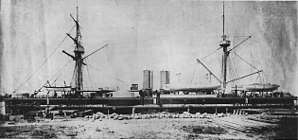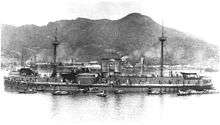Self-Strengthening Movement
 | |
| Duration | 1861 – 1895 |
|---|---|
The Self-Strengthening Movement (Chinese: 洋務運動; pinyin: yángwù yùndòng Chinese: 自強運動 Chinese: 同治維新), c. 1861 – 1895, was a period of institutional reforms initiated in China during the late Qing dynasty following a series of military defeats and concessions to foreign powers.
To make peace with the Western powers in China, Prince Gong was made regent, Grand Councilor, and head of the newly formed Zongli Yamen (a de facto foreign affairs ministry). He would be assisted by a new generation of leaders (see below).
The majority of the ruling elite still subscribed to a conservative Confucian worldview, but following China's serious defeats in the First and Second Opium Wars, several officials now argued that in order to strengthen itself against the West, it was necessary to adopt Western military technology and armaments. This could be achieved by establishing shipyards and arsenals, and by hiring foreign advisers to train Chinese artisans to manufacture such wares in China. As such, the "self-strengtheners" were by and large uninterested in any social reform beyond the scope of economic and military modernization.
However, the scholarly class of China became rapidly militarized, and career soldiers of non-scholarly background increasingly grew to overshadow them, leading to the Warlord era.
Etymology
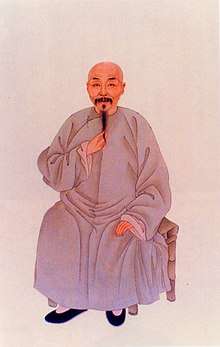
The concern with the "self-strengthening" of China was expressed by Feng Guifen (1809–1874) in a series of essays presented by him to Zeng Guofan in 1861. Feng obtained expertise in warfare commanding a volunteer corps in Qing government's campaign against the Taiping rebels. In 1860 he moved to Shanghai, where he was much impressed by Western military technology.
In his diaries, Zeng mentioned his self-strengthening rhetoric directed at technological modernization.[1]
First phase (1861–1872)
The movement can be divided into three phases. The first lasted from 1861 to 1872, emphasized the adoption of Western firearms, machines, scientific knowledge and training of technical and diplomatic personnel through the establishment of a diplomatic office and a college.
Superintendents of Trade
As a result of treaties with the Western powers, the two ports of Tianjin and Shanghai were opened to Western trade. Two officials titled Commissioner of Trade for the southern and northern ports, respectively were appointed to administer foreign trade matters at the newly opened ports.
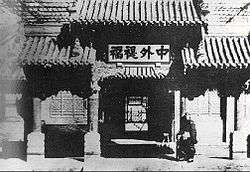
Although the ostensible reason for the establishment of these two government offices was to administer the new treaty ports, the underlying reasons for their establishment were more complicated: these superintendents were supposed to confine to the ports all diplomatic dealings with foreigners, rather than burdening the central government in Beijing with them. The authority of the commissioners also came to include the overseeing of all new undertakings utilizing Western knowledge and personnel; thus, they became the coordinators of most self-strengthening programmes.
Li Hongzhang was the Tianjin Superintendent from 1870 and was so successful in taking over the functions of the Zongli Yamen that communication between the imperial court and the foreign diplomats at Beijing were kept under the auspices of the Self-Strengthening reformers.
This phase was also the first time that they began to work on the treaties that would later be instated.
Maritime Customs Service (1861)
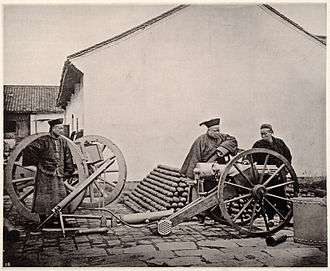
A British national, Horatio Nelson Lay, was appointed as the Inspector-General of the Imperial Maritime Customs Service, which was established in April 1861. This office evolved from the Inspectorate of Customs, which had been created in 1854 as a response to the threat of attacks on Shanghai by Taiping rebels. The office was designed to collect tariffs equitably and generate new revenues for the Qing imperial court from the import dues on foreign goods. Lay's main duty was to exercise surveillance over all aspects of maritime revenue and to supervise the Chinese inspector superintendents who collected revenue at the various treaty ports. Rather than being an innovation, this move merely institutionalized a system which had been in existence since 1854.
The maritime customs service ensured the Chinese government a reliable and growing source of new revenue. Customs revenues increased from 8.5 million taels of silver in 1865 to 14.5 million taels in 1885. Customs revenue paid off the 1860 indemnities. It also furnished part or all of the revenues of such new undertakings as the Beijing Tongwen Guan, the Jiangnan and Tianjin Arsenals, the Fuzhou Navy Yard, and the educational mission to the United States. The customs service also played an important role in checking smuggling. It also charted the Chinese coast and installed lighthouses, beacons, and other modern aids to maritime navigation.
As a result of a conflict with the Chinese government regarding the use of British naval units to suppress the Taiping Rebellion, Lay was replaced by Sir Robert Hart in 1863. Hart tried to do more than ensure that the customs service provided a steady flow of revenue to the Qing imperial court. He tried to initiate some reforms that would contribute towards Self-Strengthening: he advocated for the establishment of a national mint and post office, as well as trying to help China organize a modern naval fleet. However, he was unable to win acceptance for any of his ideas because the imperial court was not willing to allow foreigners to play an active role in the Self-Strengthening Movement.
Military modernization
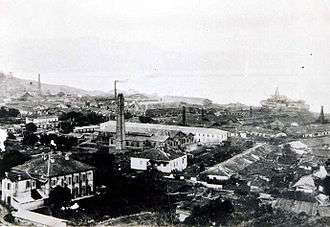
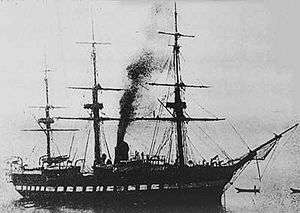
The most important goal of the Self-Strengthening Movement was the development of military industries; namely, the construction of military arsenals and of shipbuilding dockyards to strengthen the Chinese navy. The program was handicapped by several problems:
This program was spearheaded by regional leaders like Zeng Guofan who, with the efforts of the western-educated Yung Wing, established the Shanghai arsenal, Li Hongzhang who built the Nanjing and Tianjin Arsenals, and Zuo Zongtang who constructed the Fuzhou Dockyard. The arsenals were established with the help of foreign advisors and administrators, such as Léonce Verny who helped build the Ningbo Arsenal in 1862-64, or the French officer Prosper Giquel who directed the construction of the Fuzhou Arsenal in 1867-74. Zeng and Li collaborated to construct the Jiangnan Arsenal. Schools for the study of mechanical skills and navigation under the direction of foreign advisers were established at these arsenals and dockyards. As these powerful regional strongmen were able to act independently of the central government, there was little coordination between the provinces and the government.
These military industries were largely sponsored by the government. As such, they suffered from the usual bureaucratic inefficiency and nepotism. Many of the Chinese administrative personnel were sinecure holders who got on the payroll through influence.
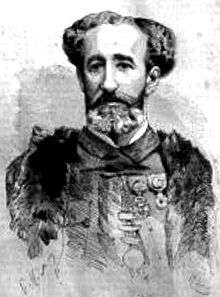
The program proved expensive: Li Hongzhang had wanted the Jiangnan Arsenal to produce breech loading rifles of the Remington type. Production finally started in 1871 and produced only 4,200 rifles by 1873: these rifles were not only more costly than, but also far inferior to, the imported Remington arms. Shipbuilding efforts were also disappointing: the program consumed half of the arsenal's annual income but the ships built were at least twice as costly as comparable vessels available for purchase in Britain. The lack of material and human resources proved to be a formidable problem. The program was heavily reliant on foreign expertise and materials. The unavoidable growth in the number of foreign employees had made increased costs inevitable. Furthermore, officials were not even aware when the foreigners were not competent enough to perform the tasks that they had been hired to do. Laxity in procurement practices also contributed to escalating costs. Many opportunities for corruption existed in construction contracts and in the distribution of workers' wages.
Army organization was reformed during this period. The Chinese government had spent a huge amount of money on military equipment and guidance from the West. The imperial court behooved with adoption of what they learned in order to raise a new army.
Some units of the old Green Standard Army forces were integrated under the command of the modernised Huai army's commanders.[2]
In 1872, the U.S Ambassador to China Frederick Low said: "That you may the better understand my reasons for this opinion, some facts in regard to the present organization of Chinese military forces may be useful. With the exception of troops immediately in and about Peking (Beijing), the military forces of the empire are made up of separate armies that have been raised and organized by, and are practically under control of, the several high provincial officers each viceroy being held responsible by the Imperial Government for a suitable quota of troops to maintain order within his own jurisdiction, and, in case of extreme emergency, to help suppress insurrection or repel invasion in other provinces. Theoretically, all the officers are directly the appointees of the emperor; practically, they are selected by the several viceroys whose nominations are simply approved by the central government. At the present time all the foreigners employed in instructing troops in the art of war are subject to provincial authority and control. They are little better in point of rank and position than 'drill-sergeants,' a position which, if not degrading, cannot be considered honorable. Even General Ward and Colonel Gordon, who were employed to assist in putting down the Taiping rebellion, were engaged and paid by the viceroy at Nanking, although the Central Government gave to them a tacit but not real imperial position".[3]

The Chinese government regarded modern education as a necessity. Li Hongzhang gave modern military education significant support. Aside from his contribution to the building of arsenals such as Jiangnan Arsenal, he had arranged a cadre of seven Chinese officers to go to Germany. The purpose of the cadre was to study at the Germany military academy in Berlin. With assistance from Germany, Li Hongzhang established the first modern military academy in Tianjin, China. Although the running of the academy encountered some troubles, Chinese military expertise were still boosted by these efforts.
Modern military education was not the only thing the Chinese government focused on. During the Self-Strengthening Movement, the Chinese government had set up many classes to study abroad including Japan, the U.S and Germany. The purpose was to learn modern science and catch up to the most developed countries as fast as possible.[4]
Another area of reform concerned the modernization of military organization and structure. The most urgent reform was to reduce the Green Standard forces to a fraction of its size and to modernize the remainder. This was done in two provinces under the influence of Li Hongzhang, but the effort failed to spread.
Second phase (1872–1885)
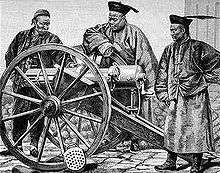
In 1870, a number of foreigners were killed during riots in Tianjin. This incident soured China's relatively stable relations with the Western powers and marked the end of the first period of the Self-Strengthening Movement. By the second period, Li Hongzhang had emerged as the most important leader of the reform movement. He played a pivotal role in starting and supporting many of the initiatives during this period. Over 90 percent of the modernization projects were launched under his aegis.
During this phase, commerce, industry, and agriculture received increasing attention. Attention was also given to the creation of wealth in order to strengthen the country. This was a new idea for the Chinese, who had always been uncomfortable with activities which create wealth from anything other than land. The development of profit-oriented industries such as shipping, railways, mining, and telegraphy were therefore rather new ventures for the Chinese government.
The Qing government sanctioned what was known as "government-supervised merchant undertakings". These were profit-oriented enterprises which were operated by merchants but which were controlled and directed by government officials. Capital for these enterprises came from private sources but the government managed them and also provided subsidies in some cases.
Examples of such government-supervised merchant undertakings include the China Merchants' Steam Navigation Company, the Kaiping Mines, the Shanghai Cotton Mill, and the Imperial Telegraph Administration.
However, being government-supervised, these enterprises could not escape from the ugly sides of bureaucratic administration: they suffered from nepotism, corruption, and lack of initiative. Managers also found ways to siphon off profits in order to avoid the payment of official levies and exactions. They also monopolized business in their respective areas, and by thus discouraging private competition, they impeded economic development. Despite its economic inefficiencies, the merchant-bureaucrat combination remained the principal device for initiating industrial enterprises.
Modern Military Education
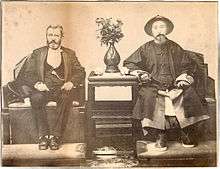
China's overseas education began at the period, in which military overseas education was an important part. Based on the characteristics of the Self-Strengthening Movement era and the need of the Navy and Army overseas education that has a wide range of content, clear requirements, practice-oriented principle and strict examination, a significant number of modern military personnel had been turned out. Modern military education system was established and the new national defense strategy was promoted in China during the period.
The idea of training for the navy began at 1872. At the time the minister of warship and vessel, Shen Baozheng suggested to deploy the trainees for the navy. However, due to the lack of financial support, this plan wasn't put into practice initially. The plan caught the government's attention a year later. Ministers saw the importance of having a modern navy and the necessity of learning advanced navigation skills. Supported by Li Hongzhang and Zuo Zongtang, at 1877 Shen picked 30 trainees and deployed them to the Great Britain and France for training. This plan underpinned the formation of the Beiyang Fleet, the largest fleet in Asia at that time.
While Qing government deployed trainees for the navy, the training for army was also deemed as priority. Especially after the first Sino-Japanese War, many military leaders saw its importance. Before the first Sino-Japanese War the Qing government didn't balance the concentration on the two types of military forces. Having experienced the great failure of the first Sino-Japanese War and the complete demise of Beiyang Fleet, they started to focus on the land army training. Since 1876 the government of Qing had sent thousands of officers to military academies in different countries, including Japan, Germany, the Great Britain and France.[5]
Third phase (1885–1895)
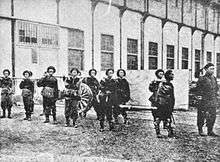
By this period, the enthusiasm for reform had slowed down to a crawl. The conservative faction at court had managed to overwhelm Prince Gong and his supporters.
While the emphasis on building tall structures and industries continued, the idea of enriching the country through the textile industry gained the court's favor; thus industries like textiles and cotton-weaving developed rapidly.
New types of enterprises sprouted in this period: joint government and merchant enterprises, even incipient "private enterprises". Whereas the Chinese government had traditionally discriminated against private merchants, all the initial encouragement of private enterprises seemed to mark a change in the government's attitude. However, the government was only interested in getting capital from private enterprises; the government was still not ready to let them take an active role in economic development. Thus, the private enterprises failed to flourish, and control of such enterprises remained firmly in government's hands.
Examples of such enterprises included Guizhou Ironworks established in 1891 and the Hubei Textile Company established in 1894. Like all other newly sprouted enterprises of its kind, they were very weak and represented only a small fraction of the total investment in industry.
However, in 1888, the Imperial examinations was expanded to include the subject of international commerce. In 1889, a court conference regarding the initiation of railway construction was almost unanimously in favour of the proposal, but concerns of further erosion of sovereignty to foreign domination precluded foreign investment (and ownership), and the government's finances itself were found insufficient.[6]
Politics
Two sources of conflict characterized Court politics during the period of the Self-Strengthening Movement. The first was the struggle for influence between the conservative and progressive/pragmatic factions in court. The other was the conflict between the central government's interests and new regional interests. These tensions determined the character and ultimately the successes and failures of the movement.
Court affairs
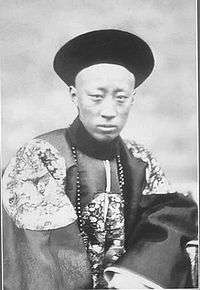
Both the conservative and the progressive factions believed in military modernization and adopting military technology from the West, where they differed in was the reform of the political system. Conservatives like Prince Duan, who were xenophobic and disliked foreigners, still adopted Western weaponry and used it to equip their armies. During the Boxer Rebellion, the conservative faction was led by Prince Duan and Dong Fuxiang, who equipped their troops with western rifles and weapons, but made them wear traditional Chinese military uniforms rather than Western-style uniforms.
The conservative faction was led by Empress Dowager Cixi, who became the most powerful political figure in the Qing imperial court after she became the regent for her son, the Tongzhi Emperor, during his years as a minor. Her power and status in the imperial court were further strengthened in 1875 when she became regent for her nephew, the Guangxu Emperor, who ascended the throne after the Tongzhi Emperor's death. The Empress Dowager was adept at manipulating court politics and rivalry to her advantage. She had to accept the reforms of Prince Gong and his supporters initially because of Prince Gong's role in helping her seize power and because of her relative inexperience in political affairs. However, as her own political acumen developed over the years, her support of either faction would depend on the political circumstances. Increasingly, she began to undermine the influence of Prince Gong's faction by supporting conservatives' (Prince Chun, Woren, Li Hongzao) opposition and criticism of reforms. Prince Gong was also temporarily removed from his office several times to undercut his influence. Wenxiang's death in 1876 further weakened the position of Prince Gong. The Empress Dowager's final success was evident from her removal of Prince Gong from power in 1884.
Regional issues
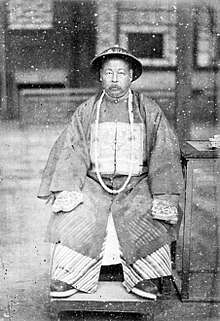
Empress Dowager Cixi was also acutely aware of the tensions that had arisen as a result of the growing influence of regional Chinese leaders: from 1861 to 1890, almost half of the governors general were Chinese who had risen through military command. Regionalism became even stronger because modernization projects were spearheaded by these regional officials. Modernization projects like arsenals and industries increased the influence of regional officials such as Li Hongzhang, Zeng Guofan, and Zuo Zongtang. Qing imperial rule was thus dependent on the loyalty of regional officials. The Empress Dowager thus had to cooperate with these regional leaders initially but her strong influence over these regional leaders continued to determine the success or failure of modernization efforts.
The Qing imperial court was fortunate in that despite their own growing power, regional leaders like Li Hongzhang remained loyal to the central government. Li Hongzhang provides the best example of the delicate balance between regional power and dynastic loyalty. He was Viceroy of Zhili and commissioner for the northern ports, and he controlled the Anhui Army, which was supplied by arsenals that he had established at Tianjin, Nanjing and Shanghai; thus he had substantial provincial revenues at his disposal. Nevertheless, he remained loyal to the throne and to Empress Dowager Cixi. The regional leaders were also increasingly restricted by the opposition from the conservative faction in court as that faction grew more influential. In time, even Li Hongzhang had to resort to allying with Prince Chun in order to win the favor of Empress Dowager Cixi.
Evaluation
Military
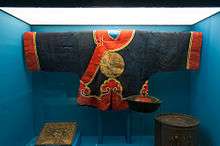
Jane E. Elliott criticized the allegation that China refused to modernize or was unable to defeat Western armies as simplistic, noting that China embarked on a massive military modernization in the late 1800s after several defeats, buying weapons from Western countries and manufacturing their own at arsenals, such as the Hanyang Arsenal during the Boxer Rebellion. In addition, Elliott questioned the claim that Chinese society was traumatized by the Western victories, as many Chinese peasants (90% of the population at that time) living outside the concessions continued about their daily lives, uninterrupted and without any feeling of "humiliation".[7]
Historians have judged the Qing dynasty's vulnerability and weakness to foreign imperialism in the 19th century to be based mainly on its maritime naval weakness while it achieved military success against westerners on land, the historian Edward L. Dreyer said that "China’s nineteenth-century humiliations were strongly related to her weakness and failure at sea. At the start of the Opium War, China had no unified navy and no sense of how vulnerable she was to attack from the sea; British forces sailed and steamed wherever they wanted to go......In the Arrow War (1856-60), the Chinese had no way to prevent the Anglo-French expedition of 1860 from sailing into the Gulf of Zhili and landing as near as possible to Beijing. Meanwhile, new but not exactly modern Chinese armies suppressed the midcentury rebellions, bluffed Russia into a peaceful settlement of disputed frontiers in Central Asia, and defeated the French forces on land in the Sino-French War (1884-85). But the defeat of the fleet, and the resulting threat to steamship traffic to Taiwan, forced China to conclude peace on unfavorable terms."[8]
During the Ili crisis when Qing China threatened to go to war against Russia over the Russian occupation of Ili, the British officer Charles George Gordon was sent to China by Britain to advise China on military options against Russia should a potential war break out between China and Russia.[9] The Qing dynasty forced Russia to hand over disputed territory in the Treaty of Saint Petersburg (1881), in what was widely seen by the west as a diplomatic victory for the Qing. Russia acknowledged that Qing China potentially posed a serious military threat.[10] The Russians observed the Chinese building up their arsenal of modern weapons during the Ili crisis, the Chinese bought thousands of rifles from Germany.[11] In 1880 massive amounts of military equipment and rifles were shipped via boats to China from Antwerp as China purchased torpedoes, artillery, and 260,260 modern rifles from Europe.[12] Compared to Russian controlled areas, more benefits were given to the Muslim Kirghiz on the Chinese controlled areas. Russian settlers fought against the Muslim nomadic Kirghiz, which led the Russians to believe that the Kirghiz would be a liability in any conflict against China. The Muslim Kirghiz were sure that in an upcoming war, that China would defeat Russia.[13] Russian sinologists, the Russian media, threat of internal rebellion, the pariah status inflicted by the Congress of Berlin, the negative state of the Russian economy all led Russia to concede and negotiate with China in St Petersburg, and return most of Ili to China.[14]
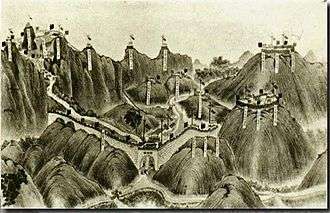
The Huai Army was able to match up against the French forces in combat on Taiwan. When the French attempted to seize Taiwan's Keelung forts, and attack near Tamsui, they were beaten back by the Huai soldiers.[15] The French were also beaten back at the Battle of Bang Bo[16] and Battle of Phu Lam Tao,[17] causing sufficient embarrassment to the French government that it ended the Prime Minister's career,[18] and the Chamber of Deputies was only three votes short of a withdrawal from Vietnam.[19]
Mass media in the west during this era portrayed China as a rising military power due to its modernization programs and as a major threat to the western world, invoking fears that China would successfully conquer western colonies like Australia.[20]
The British observer Demetrius Charles de Kavanagh Boulger suggested a British-Chinese alliance to check Russian expansion in Central Asia.
The Russian military observer D. V. Putiatia visited China in 1888 and found that in Northeastern China (Manchuria) along the Chinese-Russian border,the Chinese soldiers were potentially able to become adept at "European tactics" under certain circumstances, and the Chinese soldiers were armed with modern weapons like Krupp artillery, Winchester carbines, and Mauser rifles.[21]
Foreign observers reported that, when their training was complete, the troops stationed in the Wuchang garrison were the equal of contemporary European forces.[22]
On the eve of the First Sino-Japanese War, the German General Staff predicted a Japanese defeat and William Lang, who was a British advisor to the Chinese military, praised Chinese training, ships, guns, and fortifications, stating that "in the end, there is no doubt that Japan must be utterly crushed".[23]
When it was first developed by Empress Dowager Cixi, the Beiyang Fleet was said to be the strongest navy in East Asia. Before her adopted son, Emperor Guangxu, took over the throne in 1889, Cixi wrote out explicit orders that the navy should continue to develop and expand gradually.[24] However, after Cixi went into retirement, all naval and military development came to a drastic halt. Japan’s victories over China has often been falsely rumored to be the fault of Cixi.[25] Many believed that Cixi was the cause of the navy’s defeat by embezzling funds from the navy in order to build the Summer Palace in Beijing. However, extensive research by Chinese historians revealed that Cixi was not the cause of the Chinese navy’s decline. In actuality, China’s defeat was caused by Emperor Guangxu’s lack of interest in developing and maintaining the military.[24] His close adviser, Grand Tutor Weng Tonghe, advised Guangxu to cut all funding to the navy and army, because he did not see Japan as a true threat, and there were several natural disasters during the early 1890s which the emperor thought to be more pressing to expend funds on.[24]
Factionalism
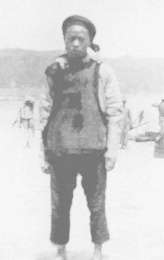
The repeated defeats suffered by China has been attributed to the factionalism of regional military governors, such as the Beiyang Fleet refusing to participate in the Sino-French War in 1884,[26] and the Nanyang Fleet retaliating by refusing to deploy during the Sino-Japanese War of 1895.[27] Li Hongzhang wanted to personally maintain control of the fleet by keeping it in northern China and not let it slip into the control of southern factions.[28] China did not have a single admiralty in charge of all the Chinese navies before 1885;[29] the northern and southern Chinese navies did not cooperate, therefore enemy navies needed only to fight a segment of China's navy.[30]
During the later phase of the Taiping Rebellion (1850–64), provincial governors were allowed to raise their own armies, the Yong Ying, to fight against the rebels; many of these forces were not disbanded after the rebellion was over, like Li Hongzhang’s Huai Army, or Zuo Zongtang's Chu Army.
Strong bonding, family ties and respectful treatment of troops were emphasized.[31] The officers were never rotated, and the soldiers were handpicked by their commanders, and commanders by their generals, so personal bonds of loyalty formed between officers and the troops, unlike Green Standard and Banner forces.[32] These reforms did not establish a national army; instead, they mobilized regional armies and militias that had neither standardization nor consistency. Officers were loyal to their superiors and formed cliques based upon their place of origins and background.
The Confucian disdain for the military was swept aside by the rising necessity of military professionalism, with scholars becoming heavily militarized, and many officers from non-scholarly backgrounds rising to high command and even high office in civil bureaucracy; the military upstaged the civil service.[33]
In abject contradiction with Confucian doctrine, they were influenced by German and Japanese ideas of military predominance over the nation, and coupled with the absence of unity amongst the various cliques in the officer class, led to the fragmentation of power in the warlord era.[34]
Industrialisation
Kenneth Walker criticised the emphasis placed on cultural conservatism as a factor in delaying the industrialisation of China, pointing out that Sheng Xuanhuai and his fellow early industrialists were capable, accomplished businessmen who generated much profit from their operations. He considers them to have merely abided by the "principle of increasing risk" in calculating liquidity, capital replacement funds, short-term and long-term expectations, while their enterprises remained highly successful commercially. While these early industrialists had political ambitions as scholar-officials, and occasionally spent their funds on disaster relief, it is pointed out that so did the contemporary English factory owners. He postulated that the slow advancement of industrialisation was instead primarily due to the modern industrial efforts' size relative to China.[35]
List of arsenals in Qing China
- Hanyang Arsenal
- Jiangnan Shipyard
- Taiyuan Arsenal
- Lanchow Arsenal (Lanzhou Arsenal) built by the Chu Army
- Foochow Arsenal
- Great Hsi-Ku Arsenal
List of modernized armies in Qing China
See also
- ↑ Jonathan D. Spence, In Search for Modern China. 1990:197.
- ↑ John King Fairbank; Kwang-Ching Liu; Denis Crispin Twitchett, eds. (1980). Late Ch'ing, 1800-1911. Volume 11, Part 2 of The Cambridge History of China Series (illustrated ed.). Cambridge University Press. p. 244. ISBN 0-521-22029-7. Retrieved 2012-01-18.
Soon after arriving in Chihli in 1870, Li began to integrate Chihli's Western-trained military forces into his own military organization, hopeful of putting these local resources to more effective use. He began with the 6,000 or so Green Standard lien-chün troops of the province, attempting to provide them with the same kind of drill and instruction as were available to his own men. He also secured the appointment of Anhwei Army commanders as high officers of the province's Green Standard system, in each case with Peking's approval. Ch'ung-hou's foreign arms and cannon corps, which Li inherited, was given retraining. Li refortified Taku and built a strategic walled city fronting the river ten miles form the estuary. He also expanded the Tientsin Arsenal, having been allocated funds for the purpose from the Tientsin maritime customs.107
- ↑ Palm, Daniel C (17 April 2014). "3 Learning the 'superior techniques of the barbarians': China's self-strengthening movement". In Chau, Donovan C; Kane, Thomas M. China and International Security: History, Strategy, and 21st-Century Policy. 1. Praeger Security International. pp. 46–47. ISBN 978-1440800016.
- ↑ Palm, Daniel. "Chinese Encounters with Foreign Ideas in the Self-Strengthening Movement (1861-1895)" (PDF). American Association of Chinese Studies Conference.
- ↑ Duan, Qinghui. "Self-Strengthening Movement and Military Overseas Education". Journal of Chongqing University of Science and Technology.
- ↑ John King Fairbank; Kwang-Ching Liu; Denis Crispin Twitchett (eds.). Late Ch'ing, 1800-1911. Volume 11, Part 2 of The Cambridge History of China Series (illustrated ed.). Cambridge University Press. p. 564. ISBN 0-521-22029-7.
- ↑ Jane E. Elliott (2002). Some did it for civilisation, some did it for their country: a revised view of the boxer war. Chinese University Press. p. 143. ISBN 962-996-066-4. Retrieved 2010-06-28.
- ↑ PO, Chung-yam (28 June 2013). Conceptualizing the Blue Frontier: The Great Qing and the Maritime World in the Long Eighteenth Century (PDF) (Thesis). Ruprecht-Karls-Universität Heidelberg. p. 11.
- ↑ John King Fairbank (1978). The Cambridge History of China: Late Chʻing, 1800-1911, pt. 2. Cambridge University Press. pp. 94–. ISBN 978-0-521-22029-3.
- ↑ David Scott (7 November 2008). China and the International System, 1840-1949: Power, Presence, and Perceptions in a Century of Humiliation. SUNY Press. pp. 104–105. ISBN 978-0-7914-7742-7.
- ↑ Alex Marshall (22 November 2006). The Russian General Staff and Asia, 1860-1917. Routledge. pp. 78–. ISBN 978-1-134-25379-1.
- ↑ Alex Marshall (22 November 2006). The Russian General Staff and Asia, 1860-1917. Routledge. pp. 79–. ISBN 978-1-134-25379-1.
- ↑ Alex Marshall (22 November 2006). The Russian General Staff and Asia, 1860-1917. Routledge. pp. 85–. ISBN 978-1-134-25379-1.
- ↑ John King Fairbank (1978). The Cambridge History of China: Late Chʻing, 1800-1911, pt. 2. Cambridge University Press. pp. 95–. ISBN 978-0-521-22029-3.
- ↑ John King Fairbank; Kwang-Ching Liu; Denis Crispin Twitchett, eds. (1980). Late Ch'ing, 1800-1911. Volume 11, Part 2 of The Cambridge History of China Series (illustrated ed.). Cambridge University Press. pp. 251–252. ISBN 0-521-22029-7. Retrieved 2012-01-18.
- ↑ Armengaud, J., Lang-Son: journal des opérations qui ont précédé et suivi la prise de cette citadel (Paris, 1901), p. 40–58; Bonifacy, A propos d’une collection des peintures chinoises représentant diverse épisodes de la guerre franco-chinoise de 1884–1885 (Hanoi, 1931), p. 23–6; Harmant, J., La verité sur la retraite de Lang-Son (Paris, 1892), p. 211–35; Lecomte, J., Lang-Son: combats, retraite et négociations (Paris, 1895), p. 428–53 and 455
- ↑ Bonifacy, A propos d’une collection des peintures chinoises représentant diverse épisodes de la guerre franco-chinoise de 1884–1885 (Hanoi, 1931),p. 37–8; Lecomte, J., Lang-Son: combats, retraite et négociations (Paris, 1895) p. 329–30 and 515–16; Lung Chang [龍章], Yueh-nan yu Chung-fa chan-cheng [越南與中法戰爭, Vietnam and the Sino-French War] (Taipei, 1993) p. 340
- ↑ Thomazi, A., La conquête de l'Indochine (Paris, 1934), p. 258–61
- ↑ Huard, L., La guerre du Tonkin (Paris, 1887), p. 1,113–74; Thomazi, A., La conquête de l'Indochine (Paris, 1934), p. 277–82
- ↑ David Scott (7 November 2008). China and the International System, 1840-1949: Power, Presence, and Perceptions in a Century of Humiliation. SUNY Press. pp. 111–112. ISBN 978-0-7914-7742-7.
- ↑ Alex Marshall (22 November 2006). The Russian General Staff and Asia, 1860-1917. Routledge. pp. 80–. ISBN 978-1-134-25379-1.
- ↑ Bonavia, David (1995). China's Warlords. New York: Oxford University Press. pp. 31–33. ISBN 0-19-586179-5.
- ↑ Kwang-Ching, Liu (1978). John King Fairbank, ed. The Cambridge History of China. Volume 11, Late Ch'ing, 1800–1911 Part 2 (illustrated ed.). Cambridge University Press. p. 269. ISBN 0-521-22029-7.
- 1 2 3 Chang, Jung (2013). The Concubine Who Launched Modern China: Empress Dowager Cixi. New York: Anchor Books. pp. 182–184. ISBN 9780307456700.
- ↑ Chang, Jung (2013). The Concubine Who Launched Modern China: Empress Dowager Cixi. New York: Anchor Books. pp. 160–161. ISBN 9780307456700.
- ↑ Loir, M., L'escadre de l'amiral Courbet (Paris, 1886), 26–9, 37–65.
- ↑ Lung Chang [龍章], Yueh-nan yu Chung-fa chan-cheng [越南與中法戰爭, Vietnam and the Sino-French War] (Taipei, 1993), 327–8.
- ↑ Bruce A. Elleman (2001). Modern Chinese warfare, 1795–1989 (illustrated ed.). Psychology Press. p. 87. ISBN 0-415-21474-2. Retrieved 2012-01-18.
Not surprisingly, considering Li Hongzhang's political power, many of the best and most modern ships found their way into Li's northern fleet, which never saw any action in the Sino-French conflict. In fact, fear that he might lost control over his fleet led Li to refuse to even consider sending his ships southward to aid the Fuzhou fleet against the French. Although Li later claimed that moving his fleet southward would have left northern China undefended, his decision has been criticized as a sign of China's factionalized government as well as its provincial north-south mindest.
- ↑ 姜文奎 (1987). 《中國歷代政制考》. 臺北市: 國立編譯館. pp. 839、840.
- ↑ Bruce A. Elleman (2001). Modern Chinese warfare, 1795–1989 (illustrated ed.). Psychology Press. p. 87. ISBN 0-415-21474-2. Retrieved 2012-01-18.
there was little, if any, coordination between the fleets in north and south China. The lack of a centralized admiralty commanding the entire navy meant that at any one time France opposed only a fraction of China's total fleet. This virtually assured French naval dominance in the upcoming conflict.
- ↑ Maochun Yu, The Taiping Rebellion: A Military Assessment of Revolution and Counterrevolution, in A Military History of China 149 (David A. Graff & Robin Higham eds., 2002)
- ↑ Kwang-ching Liu, Richard J. Smith, "The Military Challenge: The North-west and the Coast," in John King Fairbank; Kwang-Ching Liu; Denis Crispin Twitchett, eds. (1980). Late Ch'ing, 1800-1911. Volume 11, Part 2 of The Cambridge History of China Series (illustrated ed.). Cambridge University Press. pp. 202–203. ISBN 0-521-22029-7. Retrieved 2012-01-18.
- ↑ John King Fairbank; Kwang-Ching Liu; Denis Crispin Twitchett, eds. (1980). Late Ch'ing, 1800-1911. Volume 11, Part 2 of The Cambridge History of China Series (illustrated ed.). Cambridge University Press. pp. 540–542, 545. ISBN 0-521-22029-7. Retrieved 2012-01-18.
- ↑ John King Fairbank; Kwang-Ching Liu; Denis Crispin Twitchett, eds. (1980). Late Ch'ing, 1800-1911. Volume 11, Part 2 of The Cambridge History of China Series (illustrated ed.). Cambridge University Press. p. 547. ISBN 0-521-22029-7. Retrieved 2012-01-18.
- ↑ Walker, Kenneth (1960). "Reviewed Work: China's Early Industrialization: Sheng Hsuan-huai (1844-1916) and Mandarin Enterprise by Albert Feuerwerker". Bulletin of the School of Oriental and African Studies, University of London. 23 (3): 609–610.
References
- Fairbank, John King. Trade and Diplomacy on the China Coast: The Opening of the Treaty Ports, 1842–1854. 2 vols. Cambridge, MA: Harvard University Press, 1953.
- Feuerwerker, Albert. China's Early Industrialization; Sheng Hsuan-Huai (1844–1916) and Mandarin Enterprise. Cambridge, MA: Harvard University Press, 1958.
- Pong, David. Shen Pao-Chen and China's Modernization in the Nineteenth Century. Cambridge and New York: Cambridge University Press, 1994.
- Wright, Mary Clabaugh. The Last Stand of Chinese Conservatism: The T'ung-Chih Restoration, 1862–1874. Stanford, CA: Stanford University Press, 1957; 2nd printing with additional notes, 1962. Google Book
